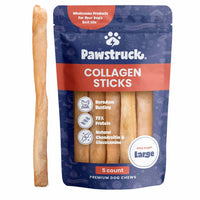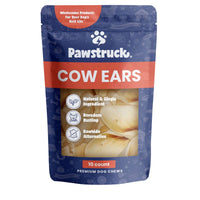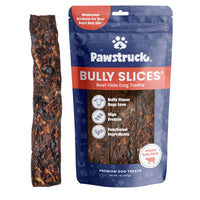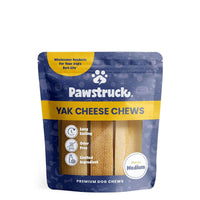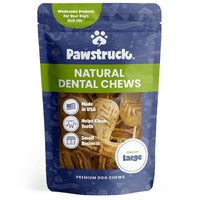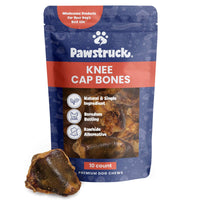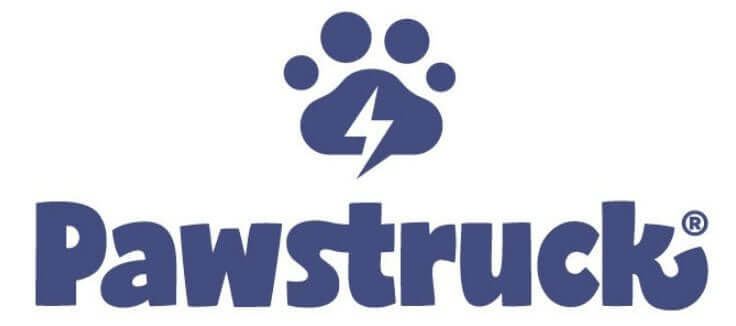How to Take Care of a Dog

Dogs have held the title “man’s best friend” since time immemorial. And it’s hard not to see why: they’re adorable creatures that are affectionate and loyal. But our furry friends are still complex animals that can only thrive when cared for by a well-informed dog parent.
Our dog-care guide will help you go through every stage of your pet’s life by offering you advice backed up by years of experience and scientific evidence.
However, you should know that the span of a dog’s life stages depends on the dog’s size and breed, so be sure to take that into consideration.

Puppy Care
(0 Months–2 Years)
If you’re trying to choose the right puppy for your household, you need to ensure its proper care above all else. Not every dog will be the perfect choice, but you can find the one for you by asking yourself these questions:
- Are you outgoing? If not, then you’ll want a dog that doesn’t need much exercise.
- Do you have a backyard, or do you live in an apartment in the city? The latter can be a bit more difficult to manage when it comes to potty training and exercising your dog.
- Does your work take a large portion of your day? If so, do you have a friend or family member who can take care of your dog while you’re away?
By going through this line of questioning, you’re making sure that you choose the right dog for your lifestyle. The most common factors you need to consider are the dog’s age, size, energy level, and breed.
Always remember that having a puppy to care for isn’t a walk in the park. This stage in a dog’s life can be particularly hard, especially if you don’t have any prior dog-care experience.
Here are a couple of tips to help you get started.

Depending on their age, puppies will need to be fed multiple times a day. They start out with very small stomachs, after all, so they can only handle smaller servings at first. Make a schedule that you can stick to so that you can keep track of feeding (and potty) times easier.
As they begin to grow, you can increase the serving size and reduce the number of servings each day:
- 8–12 weeks: 4 meals/day
- 3–6 months: 3 meals/day
- 6–12 months: 2 meals/day
- >12months: 1 meal/day (but larger canines or dogs prone to bloating are better served two smaller meals each day)
Make sure to get your pet premium-quality food made for puppies. Try to limit feeding them human food because it can be harder to create a balanced diet from it. This can result in obesity, bone problems, imbalances in vitamin and mineral intake, and even promote a picky eating attitude.
If you’re having some trouble choosing the right dog food, you can ask your veterinarian for recommendations.
It’s also pretty much dog care 101 to have a clean water source that’s readily available to the puppies for most of the day. Remove the water dish a few hours before your puppy goes to bed to lessen the chances of a nighttime accident.
Here’s a more comprehensive guide to puppy feeding if you’re looking for a more in-depth explanation.
Every seasoned dog owner knows how harrowing potty training or house training can be, but the payoff at the end is well worth the effort. The first few weeks require a lot of time and patience on your part, but it gets considerably easier as the training progresses.
Here are some tips that will help you teach your puppy the right time and place to do its business to avoid any unwanted accidents.
Step 1: Getting Started
Let your puppy get comfortable in its new home. Introduce it to a more confined environment first. This way, you can keep a better eye on your puppy.
Understand your puppy’s breed behavior and needs. Read up on your pet’s breed, and see if your puppy has specific tendencies when it comes to potty training.
Step 2: Teach Your Puppy a Potty Cue and a Stop Cue
Use a specific word or phrase, like “go” or “potty time,” every time you take your puppies to their potty spot. By doing this regularly, they begin to associate that command with potty time. The more you do this consistently, the faster they’ll recognize it.
It’s best to use a command that you won’t say anywhere else in order to avoid confusing your dog.
Interrupt incidents by making a loud sound or word like “stop” (with the intention of startling them and gaining their attention, not scaring them) when you spot them in the act. This creates a cue that tells them to stop whatever it is they’re doing.
If they do stop, take them to their designated potty area, and wait for them to do their business. If not, never punish them, and don’t try to pick them up, because that may lead to a bigger mess.
Step 3: Choose a Potty Area, and Stick to It
Pick a spot right from the start, and use it frequently. This will help your dog quickly learn the idea that this is the right place to do its business. If this is done outside, be sure to keep your dog on a leash until you’ve trained it to stay.
Step 4: Reward Their Success
Pet your puppies, and praise them in a cheerful voice after every successful potty session. You can even give them a small treat afterward to reinforce the routine.
Step 5: Crate Train Your Pup for When You’re Not at Home
Crate training can be considered essential if there are times during the day when you can’t watch your puppy. Here are a couple of tips to make sure your pet is comfortable:
- Make sure your dog is comfortable using this space. Use it during mealtimes, or give them rewards if they go into the crate on their own. Never force them into the crate if they don’t want to stay in it.
- Make sure there’s enough water and food when you’re gone for more than a few hours.
- Use a sizable crate, one that’s enough for your dog to stand, lie down, and turn around in.
Here’s a guide if you want more details on crate training.
With housetraining, here are a few more tips to help you out.
Common FAQs Related to Dog Potty Training
1. What Are the Signs That the Puppy Needs to Go?
These are a few of the common telltale signs:
- Circling
- Barking
- Whining
- Sniffing around
- Dogs already acquainted with their potty area will try to get your attention if they can reach that place on their own.
2. How Long Does It Take to Potty Train a Puppy?
There really is no specific timeframe to tell you that potty training is finished. It’s all about consistency. The more you stick to a defined schedule and your training methods, the faster you’ll see the results. Your puppy can pick things up as fast as just a few days, but it’s best to keep a watchful eye on them for a few months to allow them to develop the habit.

How Much Exercise Does a Puppy Need?
Veterinarians recommend a light exercise for young puppies, limiting it to play sessions spread throughout the day and very short walks, with a lot of nap times in between.
We don’t recommend that you take your puppies outside or let them play with other dogs until they’ve been vaccinated.
As puppies get older, they need more exercise. At six months and older, they may be able to handle longer walks and short jogs. Always consult your vet before introducing a new routine for your puppy.
Consistency and Variety of Exercises
Expose your dog to different physical activities. Regardless of your puppy’s energy levels, every dog wants to play in one form or another. Whether it involves chasing, tugging, wrestling, or romping, using a variety of different activities provides a lot of benefits aside from maintaining your dog’s health and fitness.
For example, changing your routine every once in a while will help you develop your bond with your dog while keeping things interesting and fun for both of you.
Remember to be consistent. After all, dogs are creatures of habit. Consistency means giving them a chance to do a physical activity every day (not necessarily the same activity).
Two to three light exercise sessions are recommended for puppies. While this may seem excessive, each session doesn’t last that long, often taking a few minutes at most.
If you find that your puppy is a little too active for prolonged periods, here are a couple of ways you can handle that excess energy properly.
Puppy Exercise Safety Tips
Regardless of the age and breed of your pet, these tips shared by the American Veterinary Medical Association will help your dog safely get the exercise that it needs:
- Make sure your pet is properly vaccinated if you take it outside.
- Train your puppy to walk properly on a leash.
- Start with shorter walks, and take frequent breaks.
- Gradually increase the exercise time as the puppy gets older.
- Avoid exercise when the weather is too harsh.
- Call a vet if you notice a change in your pet’s behavior.
“My puppy is overactive. How should I handle it?” Check out this post.

Grooming or caring for your pets can be particularly difficult when they’re young. Puppy grooming involves a couple of steps:
Step 1: Handling
This step involves making sure that your hands are associated with positive things, such as pats, toys, and food. Let your puppy approach you first and smell your hand. Afterward, slowly and gently pet them. The more they trust you, the more they’re comfortable with letting you hold their more sensitive parts, like their belly. Here’s a great example of proper handling:
Step 2: Holding
Gently hold your puppy on either side (on the rib part) until they relax. Do it for just a few seconds, and let go. The purpose here is to condition it to be comfortable when held.
Step 3: Restraining
Hold your puppy still until it relaxes, much like the previous step. If it struggles or moves about too much, lessen the pressure, but keep it in position. The moment you notice it relaxing (less-tense muscles, yawning, licking lips, and sitting on its own), let the puppy go, and give it a reward. Remember that this shouldn’t be a stressful activity for your pet, so be sure to make it as comfortable as possible.
Step 4: Moving
Now, you can move on with training your puppy to remain calm while moving its whole body or individual parts. The best time to do this is when your pet is lying down in prone position:
- Gently pick up a leg, and rock it gently back and forth.
- Move the ears, tail, and head as if you were examining them.
- Cup the muzzle gently.
- Move the nails and the pads of the feet.
- Regularly reward your pet with verbal and physical affirmation or even small treats.
Adult Dog Care
(2 Years–5 Years)

Table of Contents - Adult Dog Care
At this stage, your pup has already grown into a mature dog that’s typically well behaved and much easier to handle. Home care for dogs in this age range will have different needs that you have to take into account.
When Is a Dog Considered an Adult?
When your pet reaches at least 90 percent of its breed’s expected adult weight, then you can switch to feeding it adult portions. In general, puppies mature by their seventh month, but bigger breeds can continue growing for over a year.
What Should I Keep in Mind When Feeding an Adult Dog?
Check the packaging labels of your dog food, and look for the nutritional-adequacy statement telling you that it has passed the standards of the Association of America Feed Control Officials (AAFCO).
How Can I Tell If a Food/Food Brand Is Right for My Dog?
As long as they have a lot of energy, a shiny coat, and a fit body, you don’t have anything to worry about. If you’re having doubts, you can consult with a vet for a professional opinion.
How Much Food Should My Dog Eat in a Day?
Use a feeding chart to determine the recommended amount for your dog’s age and breed. You may also have to adjust based on the dog’s activity level every day.
Are Treats Good for Dogs?
The amount of treats you give your dog should not exceed more than 10 percent of its overall diet. Just like with their food, you should be mindful of the ingredients found in your dog’s treats. Opt for treats that are high in fiber while low in fat and calories. Although snacks aren’t necessarily a health hazard, you should choose treats that are low in fat and calories while being high in fiber. You can try some vegetables like carrots, pumpkins, bell peppers, bananas, and other fruits and vegetables.
Can My Dog Eat Table Food?
Generally, no. Most human foods are too high in sodium, sugar, and fat, so giving your dog too much table food makes it harder to keep them in a balanced diet. Some food can be OK, though. Here’s a quick guide that gives you the dos and don’ts to feeding your dog human food.
What Are the Things That My Dog Can’t Eat?
Avoiding foods that have high fat and carbohydrate values are just the tip of the iceberg. It’s easy to think that you can give your dog anything you serve on the dinner table. But the truth is many types of human food may actually be harmful to your dog. Here are some of the most common ones you need to look out for.
These Household Items Cause 214,000 Cases of Food Poisoning in Pets Yearly Infographic
Here’s a basic dog health guide to help you maintain your pet’s wellness:

Track and maintain your dog’s ideal weight.

Encourage physical
activities.

Take your dog to the vet regularly.
For more tips, consider reading our article on raising a healthy and happy dog and another one about what you need to know about dog stress.

Adult dogs will have more energy reserves that need to be spent, so they generally require more exercise than younger pups do.
How Much Exercise Does an Adult Dog Need in a Day?
This depends entirely on the breed of your dog because this factor is a major influence on its energy level. For instance, high-energy dogs like Belgian malinois and border collies need more physical activity than a low-energy breed like a basset hound or bulldog.
Here are a couple of activity suggestions to help you out.
Outdoor Exercises
- Hiking
- Jogging
- Swimming
- Fetch
- Drafting and carting activities
Indoor Exercises
- Running up and down a set of stairs
- Hide-and-seek
- Treadmill jog
- Tug-of-war

Grooming
During this stage, your dog should already be comfortable with every grooming session, so you’ll have an easier time accomplishing all of them. You can keep on doing the same basic process used for grooming your puppy.
Except this time, your dog is already used to it, so you can skip the parts where you’re trying to acclimatize it to a new process.
Tips for Grooming an Adult Dog
- Understand that your dog is more prone to getting dirty. Since your dog is already an adult, it will now become more physically active. This includes going outdoors, which exposes it to a lot of soil and grime. So be ready to have more frequent training sessions if you regularly take your dog outside. You can also employ the help of professional groomers every once in a while to make things easier.
- Be wary of skin problems. Always observe your dog for any unusual behaviors (scratching, whining, etc.), and check them regularly by looking at them and smelling them. Here are some of the more common causes of unhealthy skin in dogs.
- Create a grooming schedule. This makes it easier to keep track of your dog’s cleaning sessions. Here’s a more comprehensive guide you can follow.
- Use different brush tools for different coat thickness. The video below shows which brush tools are most adequate for the most common coat types.
Senior Dog Care

Table of Contents - Senior Dog Care
These are the final years of a dog’s life. Pets at this age need more love and care to keep them vital and healthy. If you’re looking for a pet, consider adopting a senior dog. Contrary to popular belief, senior dogs actually have a few advantages over a young puppy. Here are some tips on how to care for a senior dog.

At What Age Is a Dog Considered a Senior?
In general, dogs that have already reached at least half of their average life expectancy are already fit for a senior’s diet.
Do Senior Dogs Have Special Dietary Needs?
Most senior dogs need a low-calorie diet to prevent excess weight gain, as well as high-fiber foods to improve and maintain their gastrointestinal health.
What Problems Usually Affect a Senior Dog’s Diet?
Conditions of the kidney, the liver, and the heart often require special diets to help with treatment. Consult with your vet to help create a meal plan for your dog if it has a condition.
Is a Dietary Supplement Necessary?
Vets may recommend chondroitin sulphate and glucosamine to help with your dog’s joint pain and arthritis. Never use human supplements, and only give your dog vet-prescribed medication.
What Can I Do If My Senior Dog Doesn’t Eat?
Before trying out these tips, make sure that your vet has already been checked for health problems that may affect your dog’s willingness to eat:
- Wet your dog’s food with water or broth.
- Give the dog home-cooked food.
- Use flavor enhancers.

Which Conditions Limit the Mobility among Senior Dogs?
Here are some of the more common conditions a senior dog may experience:
- Osteoarthritis
- Hip dysplasia
- Elbow dysplasia
- Rheumatoid arthritis
Remember to consult with your vet on how to handle your dog’s conditions properly. Here’s an in-depth guide to common senior-dog conditions and how to spot them.
Indoor Exercise for Senior Dogs
- Stair climbing (you can invest in ramps if your dog can’t accomplish this)
- Indoor play with treat toys
Outdoor Exercise for Senior Dogs
- Brief walks
- Swimming

Important Things to Remember
Older pets will have issues with their mobility. Move their joints and limbs slowly while you’re looking for signs of discomfort.
- Use a softer touch when grooming your dog, and use gentler equipment.
- Be patient, and take your time with all your activities.
- Take your dog to a vet immediately if you suspect a new condition or ailment.
- Use slow movements and a low voice if your dog has form of sight or hearing impairment so you don’t startle them.
Tips for Grooming a Senior Dog
- Spread out different grooming sessions. Instead of lumping them all together, create a looser schedule that allows shorter grooming sessions to make your dog more comfortable.
- Observe your dog’s behavior. Always observe for changes in behavior because the dog may be feeling pain or stress.
- Comfort your dog. Give it affectionate pets, and talk in a soothing voice.

Take your dog to the vet
regularly for a checkup.

Keep an eye out for
any behavioral changes.

Make your house
senior friendly.

Give your dog
healthy meals.

Make your dog’s bed more
comfortable with blankets.

Show affection
regularly.
Here are a few more tips to keep your dog vital in their final years.
Table of Contents - General Care
Each dog will have a specific coating type. While the texture of a dog’s fur changes slightly with age, the type more or less stays the same when the dog matures. Here are the five basic types and their best methods of grooming.

Smooth Coat
This type is the most low-maintenance, but it still requires regular grooming much like the others. This coat type also requires the least bathing (once a year or until smelly).Using a combination of bristle and pin brushes will keep your dog’s fur shiny. Remove any dead skin cells left after bathing them.

Double Coat
Double coating is a combination of a softer undercoat to provide insulation along with a tougher outer coat to repel dirt and water. Because of this, a double coat generally needs more grooming, compared to other coat types. The key here is to brush out every coat in portions and remove any tangled bits.
A pin brush, undertooth rake, and a wide-toothed comb can do wonders in maintaining a healthy coat and skin. This coat requires bathing a few times a year.

Long Coat
Long fur requires brushing or combing almost every day, especially if your dog is shedding. Detangling shampoos are your friend when it comes to this type of coat. You can use a smooth bristle and a pin brush for general grooming.

Wire Coat
Wiry coats (a.k.a. broken coats) are very susceptible to tangling, so they often need stripping combs and detanglers to remove any kinks. Afterward, they can be groomed with a slicker brush.
We recommend that you take your dog to a professional groomer if this is your first time, because this type of coat can be particularly hard to groom. This coat requires the most bathing each year (every two months).

Curly Coat
This coat will have soft thick curly fur that hugs the body. Regularly trim this because it can grow surprisingly fast. Use a curved-type slicker brush, and, during bathing, we don’t recommend using conditioner because it can weigh the hair down (making it hard to clip).
Frequently Asked Questions about Dog Grooming
1. What Is Puppy Fur?
Fur is your puppy’s protective barrier to help shield its skin from the harsh elements and regulate its body temperature. The fur also carries the dog’s scent, which allows other dogs to identify them.
2. Why Do Dogs Shed?
Fur naturally follows a continuous cycle of growing, resting, and shedding. New hairs will push out older ones, resulting in a lot of excess fur. Hair follicles undergo the first cycle, called anagen, during which they actively grow.
Then, there’s a period of shrinkage, called catagen, which loosens the hair root. The final stage, telogen, pushes out the older hairs so that they can be replaced by the newer hairs.
Depending on your puppy’s breed, the shedding stages can have varying time lengths. This is why some dogs seem like they’re constantly losing fur, while others rarely shed.
Learn more about dog grooming in this post.
Keep in mind that puppies shouldn’t bathe until they’re at least four weeks old, but six to eight weeks old is our recommended age. Young dogs have a harder time regulating body temperature, so they can easily get chilly from the water. Here is the step-by-step process of washing your puppy to make things a bit easier:
Step 1: Brush your pet thoroughly to ensure that there’s no hair matting.
Step 2: Prepare all the necessary supplies beforehand: dog shampoo, mineral oil, cotton balls, wash clothes, and towels. Only use shampoos made for dogs and puppies to avoid skin irritation.
Step 3: Place some cotton balls in your dog’s ears to prevent water from getting into them.
Step 4: You can add one drop of mineral oil to protect the dog’s eyes from suds.
Step 5: Bathe dogs in a tub indoors or outside with a garden hose if it’s a warmer day. A good water temperature to work with is about 102 F. Soak the puppy’s fur, sud it up, then rinse thoroughly.
Step 6: Be sure not to make loud sounds that often spook younger pups (harsh water spraying, moving shower curtains, etc.).
Step 7: Let your dog shake itself off first, then you can dry it with your prepared towels. Some dogs like being blow-dried, but be sure to keep the dryer at the lowest and quietest setting.
As your dog becomes accustomed to being handled, grooming becomes more manageable.

Even though a puppy’s teeth fall off when it becomes an adult, it’s still best to introduce your puppies to toothbrushing early so they get used to it faster. Here’s a guide that will help you maintain your dog’s dental health.
- Get your dog comfortable with having their mouth handled. Try dipping your finger into some low-sodium broth, and insert it in their mouth.
- Use dog toothpaste as one of your dog’s treats. Some toothpastes come with flavoring that gives your pets an incentive to open their mouths. Never try using toothpaste for humans because it has harmful components that can damage your dog’s organs.
- Use a chew toy to keep their mouths open. It also distracts your pet, making tooth brushing easier.
- You can use a pet toothbrush or your finger wrapped in cloth to clean the dog’s teeth.
- Repeat after each meal or at least twice a week. Remember to give your dog affection and rewards for good behavior.
Frequently Asked Questions about Dental Care
Many dog owners tend to neglect their dog’s teeth when it comes to grooming, which is why it bears repeating.
What Is a Breath Test?
This simple test checks your dog’s health by smelling the dog’s breath to check for very putrid odors. This foul smell can be a symptom of an underlying sickness, so consult with your vet for advice.
What Is the Lip-Lift Test?
This is the process of lifting your dog’s cheek for a checkup. Observe your dog’s gum color. Pink is good; white or red is bad. The teeth should be clean and free of yellow or brown tartar.
What Are the Signs of Bad Oral Health in Dogs?
Watch out for these symptoms of mouth and gastrointestinal problems:
- Excessive drooling
- Bad breath
- Gum tumors
- Inflamed gums
- Loose teeth
- Tongue cysts
How Do You Prevent These Symptoms?
You can easily prevent a majority of the symptoms above through proper oral hygiene. Here is a great example of the right way to brush your dog’s teeth and gums.
What Are Common Mouth Disorders among Dogs?
- Gingivitis
- Periodontal disease
- Gum disease
- Halitosis
- Salivary cysts
- Mouth tumors
- Distemper teeth

The best time to accomplish this is right before a bath. Here are some of the things you need to prepare:
- Ear cleaner for pets
- Cotton pads, cotton balls, and gauze squares
- Q-tips
- Tweezers
- Towel
Here is the step-by-step process to make ear cleaning easier:
Step 1: Add some ear cleaner. A few drops on the ear flap, right next to the opening, should suffice. Then place the bottle next to the opening, and gently squeeze on the dropper.
Step 2: Massage your dog’s ear. Gently move the ear’s base to loosen the debris and let the cleanser cover every ridge. Afterward, let your dog shake off its ears.
Step 3: Wipe the ear canal. After your dog shakes its ears, use an ear cleaner to moisten one of the gauzes or balls. Then use it to wipe the ear canal as far as your finger can go without using excess force.
Use Q-tips to remove tougher debris. Repeat this process until your dog’s ear is clean, but stop if the skin begins to redden. You can give your dog a reward to make the experience more enjoyable for them.
Remember: Never put Q-tips into a dog’s ear canal any farther than one is able to see. Otherwise, you risk damaging the eardrum. Also, you should only use a minimal amount of cleaner, and it shouldn’t reach the deeper parts of a dog’s ear.
Just gently wipe outward from the eye’s inner corner, using a wet cotton ball without touching the actual eyeball. If your dog is displaying the symptoms below, take it to your vet.
- Crusty gunk
- Discharge
- White or red eyelid linings
- Tearing
- Closed eye
- Cloudy eye
- Different pupil sizes
- Third eyelid

The key to good nail cleaning is to avoid the part with blood vessels and cut only the excess portion of the nail. Here are a few tips from clipping the sensitive parts of a dog’s nails:
- Remove any stuck debris using tweezers.
- Trim longer hairs growing between your dog’s toes.
- Apply dog-pad moisturizer.
- Massage paws by rubbing between pads and individual toes to promote circulation.
- Treat wounds with antibacterial wash, and cover them with light bandages.
- Don’t take walks during harsh weather.
The key to good nail cleaning is to avoid the part with blood vessels and cut only the excess portion of the nail. Here are a few tips from clipping the sensitive parts of a dog’s nails:
- Clear or white nails generally have the blood vessels visible. The pink portion is the part you need to avoid. Giving yourself a bit of clearance is a good idea.
- For darker nails, only clip off the curving, hook-like portion of the nail that is turning downward. This process is called tipping, and it encourages the blood vessels to retract. You can do this bit by bit until the nails reach a proper length.

Depending on the breed of your dog, they may need help with their anal glands. Most dogs won’t have a problem with this, but some will need regular maintenance, which can be an iffy (but necessary) process.
Generally, we recommend that you ask a vet to express your dog’s anal glands and have them show you firsthand how to do it properly. If you are confident enough that you can do this on your own, here are the steps:
Step 1: Wear some gloves and prepare some tissues.
Anal-gland expressing is best done during baths to remove the discharge on your dog’s fur.
Step 2: Keep your dog stationary.
You can attach your dog’s leash to a stationary object or ask another person to help you hold your pet in place.
Step 3: Locate the glands on the sides of the dog’s anus, and cover with tissues.
You can find them at about four and eight o’clock; they should feel like tiny marbles under the skin.
Step 4: Hold the gland with your forefinger and thumb on each side, and squeeze gently.
Push in and squeeze upward until emptied, much like you would a pimple.
Step 5: Reward your dog with affection or a treat.
Every pet needs someplace warm and quiet to rest and recuperate. We recommend a dog bed or training crate with clean blankets and a small pillow. Wash the bedding regularly and place a source of water nearby.
Tags and licenses are necessary for your dog’s safety. They act as your dog’s identification and will make finding your dog easier if you ever lose it. These tags can also include some dog-care information that will help vets treat your dog properly in case of an accident.

These are, by far, the two most common pet-related pests you’ll encounter. Here the ways you can prevent, diagnose, and treat them.
Causes
- Outdoor exposure
- Exposure to other animals
- Warm climate
- Ungroomed fur
Symptoms
- Flea eggs (white spots)
- Droppings (small flecks)
- Excessive skin scratching and biting
- Allergic dermatitis
- Pale gums
- Hair loss
- Scabbing
Treatment
- Use prescribed oral or topical treatment.
- Use shampoos powders and sprays.
- Clean your house thoroughly, using special foggers and sprays for severe cases.
- Apply lawn treatments.

Causes
- Outdoor exposure
- Exposure to other animals
- Ungroomed fur
- Warm weather (late spring or summer)
Symptoms
- Red rashes
- Frequent scratching on the same spot
Treatment
- Wear gloves, and use tweezers to remove the tick.
- Place the tick in a jar filled with alcohol.
- Clean the infected area with soap and water.
- Wash your hands and sterilize the tweezers.
- Observe and monitor the infected area.
- Consult with the vet for severe cases.
Don’t give your dog medications that aren’t prescribed by its vet. If you think your pet has ingested something poisonous, call the vet immediately, or you can call (888) 426-4435 for the Animal Poison Control Center.
Spaying and neutering are very important decisions for every pet owner. While the main reason for these surgeries is to prevent unwanted pregnancies, they also have additional benefits you may not have known about.

Medical Benefits of Spaying/Neutering
- Females live longer, healthier lives.
- Males are safe from developing prostate problems and testicular cancer.
Behavioral Benefits of Spaying/Neutering
- Females won’t be in heat.
- Males are less inclined to roam far from your house.
- Your neutered male may be better behaved.
Common Myths about Spaying/Neutering That Are Untrue
- Spaying and neutering cause weight gain.
- Neutering fixes every behavior problem.
When to Spay/Neuter Your Pooch
The neutering age for dogs generally lies between 6 and 9 months, but 2-month-old puppies can be neutered if they’re healthy.
Pre- and Post-surgery Checklist
Ask the clinic for advice on what to do the day before the surgery. After a successful operation, your vet will give you some instructions to make sure the healing process goes smoothly.
Here Are a Few Tips to Improve Your Dog’s Recovery:
- Give your dog its own private place for rest. This space should be away from other pets.
- Prevent your dog from exerting itself physically.
- Don’t let your dog lick its incision site. Use treats as distraction, or outfit your dog with Elizabethan collars.
- Don’t bathe your dog until your vet allows it.
- Observe the incision for any signs of infection or inadequate healing.
Vaccines are the most effective way of saving your dog from deadly diseases. After you get new pets, vaccinating them should always be one of the priorities that isn’t postponed.
How Do Vaccines Work?
Vaccines essentially prepare a body’s immune system, allowing it to identify and combat a specific disease to reduce its severity or prevent it entirely.
What Are Core Vaccines?
These vaccines are seen as vital because of the diseases’ severity, exposure risks, and human transmissibility. Here are some diseases that are prevented by core vaccines:
- Distemper
- Canine parvovirus
- Rabies
- Canine hepatitis
When Is the Best Time, and How Often Should I Vaccinate?
Your vet will tell you the best schedule for vaccinating, which depends on the vaccine, the age of your pets, their medical history, and the environment they live in.
Puppies should get vaccinations as early as 6 weeks old. Here’s a vaccination chart from the AKC:
| Age | Recommended Vaccine | Optional Vaccine |
|---|---|---|
| 6—8 weeks | distemper, parainfluenza | bordetella |
| 10—12 weeks | DHPP (vaccines for distemper, adenovirus [hepatitis], parainfluenza, and parvovirus) | coronavirus, leptospirosis, bordetella, Lyme disease |
| 12—24 weeks | rabies | none |
| 14—16 weeks | DHPP | coronavirus, Lyme disease, leptospirosis |
| 12—16 months | rabies, DHPP | coronavirus, leptospirosis, bordetella, Lyme disease |
| Every 1—2 years | DHPP | coronavirus, leptospirosis, bordetella, Lyme disease |
| Every 1—3 years | rabies (as required by law) | none |
Are There Laws on Vaccinating Pets?
Every state has different laws on the required vaccines. In general, almost every state requires rabies vaccinations for all pet dogs at 3 months of age.
All vaccinations need to be done by a licensed vet or any government-qualified vaccine administrator. Some states, like Connecticut, require that your dogs be revaccinated three years after their initial shot, while the rest don’t have this specification.
Here’s a full list of the state laws on vaccination.
What Are the Risks Associated with Vaccination?
Some pets may experience mild symptoms such as the following:
- Fever
- Allergic reaction
- Soreness
What Are Signs That a Dog May Be Pregnant?
Here are a few telltale signs that your dog is pregnant:
- Bigger appetite
- Changing nipple size
- Weight gain
How to Care for a Pregnant Dog
- Increase your dog’s meals. The AKC’s recommendation for dog owners is to increase their pet’s food intake in small increments until reaching a 35—50 percent increase. Feed your dog small but multiple servings.
- Regularly visit your vet. This is the best way of making sure your dog stays healthy while pregnant.
How to Prepare for Puppies
You can use whelping boxes to make your dog more comfortable. Place them somewhere warm and quiet. It’s a good idea to introduce your dog to the box beforehand to acquaint it with the box.
Whelping Supply Checklist
- Line whelping box with newspaper
- Non-skid mats used for bedding for after whelping
- Towels for cleaning puppies
- Paper towels for cleaning up
- Thermometer
- Dental floss for tying the umbilical cord
- Scissors for cutting the cord
- Heating pad for warming up the puppies (only gently heating)
- Clean scissors to cut the umbilical cords
- Iodine for cleaning puppy abdomens
- Baby scale
- Phone number of your vet and the nearest emergency clinic
Things You Need to Know about Whelping
- Dogs generally don’t require assistance from humans when giving birth. Assist your dog only if the need arises. Remove the membrane only if the mother can’t do it herself.
- Dogs naturally cut the umbilical cord. If not, you have to snip and tie the cord yourself. The length of the cut should be about one to two inches away from the pup.
- Count the placentas. Placentas left inside the mother can present complications in the future.
Labor Complications
You should call the vet in the following circumstances:
- Your dog looks to be in extreme pain.
- The delivery is too long (two hours), or the contractions are too long (45 minutes).
- Your dog is shivering, collapsing, or trembling.
- Your dog is releasing bloody or dark green fluid before delivering its first puppy.
- There are no whelping signs after two months of pregnancy.
If you’re ready to train your puppies or dogs, consider teaching them these essential commands and different methods of training.
Essential Commands
- Sit
- Come
- Down
- Stay
- Leave it
Clicker Training
This training is a method that uses basic positive reinforcement. Many people use this because dogs generally pick it up quickly and it makes the training process easier and faster.
Leash Training
All dogs need proper leash walking. This training method will teach your dog to walk by your side while on a leash instead of tugging at you constantly.
Proofing Behaviors
This training method ensures that your dog has completely learned the behavior you want and that they’ll continue to show this behavior in different environments and situations.
Here are some useful pieces of pet-care information to help keep your dog happy and healthy.
- Check the FDA’s website regularly for recalls on dog food.
- If your dog is showing aggression, approach it carefully and slowly.
- Call your vet if you notice your dog moving differently.
- Set playtime boundaries.
- Constantly observe your dog for any behavioral changes that may warrant a vet visit.
- Never hit your dog for whatever reason.
- Fence
- Crate
- Baby gates
- Exercise pen
- Bed
- Anti-chew spray
- Collar or harness
- Retractable leash
- ID
- Cleaning supplies
- Poop scoop
- Poop bags
- Bowls
- Brush
- Rinseless shampoo
- Toothbrush
- Toenail clippers
- Plush toys
- Throw toys
- Interactive toys
Sources
- https://pets.webmd.com/dogs/guide/tips-better-dental-health-dogs#1
- https://www.akc.org/expert-advice/health/dog-pregnancy-care-prep/
- https://www.aspca.org/pet-care/general-pet-care/vaccinations-your-pet
- https://www.aspca.org/pet-care/general-pet-care/spayneuter-your-pet
- https://www.aspca.org/pet-care/dog-care/general-dog-care
- https://www.aspca.org/pet-care/general-pet-care/fleas-and-ticks
- https://paws.org/adopt/adopt/id-tags-and-licenses/
- https://pets.webmd.com/dogs/guide/senior-dog-food#1
- https://pets.webmd.com/dogs/guide/feeding-your-adult-dog-faq#1
- https://www.aspca.org/pet-care/dog-care/dog-grooming-tips
- https://www.akc.org/expert-advice/health/how-much-exercise-does-dog-need/
- https://www.akc.org/expert-advice/training/puppy-socialization/
- https://www.avma.org/resources/pet-owners/petcare/walking-your-pet
- https://www.avma.org/resources/pet-owners/petcare/walking-your-pet
- https://pets.webmd.com/dogs/guide/house-training-your-puppy#1
- https://www.avma.org/sites/default/files/2019-12/Rabies-statelawchart.pdf
